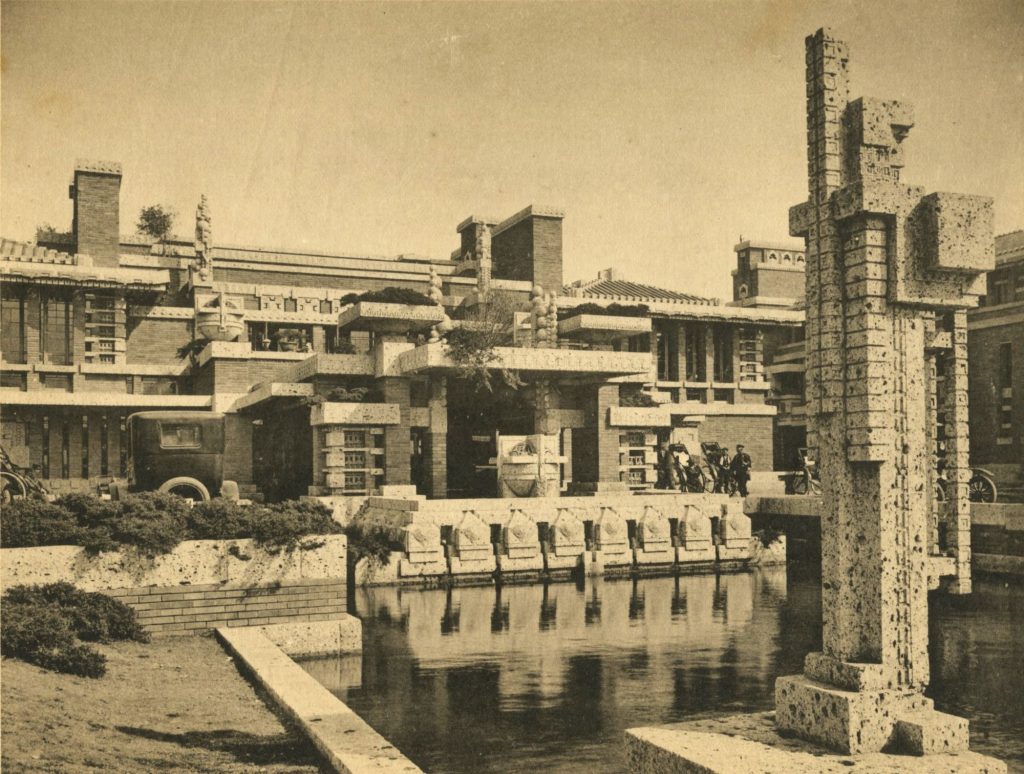Events February 2024

Unpacking the Imperial Hotel at 100: Frank Lloyd Wright and the World
This virtual lecture presented by the Frank Lloyd Wright Foundation and the Frank Lloyd Wright Building Conservancy is the final talk in a series celebrating FLW and his engagement with Japan. The talk, by author and preservation consultant Kathryn Smith, will explore Wright’s water garden designs—built and unbuilt.
Over his career, Frank Lloyd Wright was especially noted for designing not just buildings, but gardens and landscapes as extensions of his buildings. Wright drew on the two main landscape traditions: the Italian-French system of a man-made order dominating nature and the Japanese aesthetic of designing in harmony with nature. Wright did not see these traditions in opposition, he used one or the other, depending on the commission. Yet his was not an academic mind. He was an artist who looked at models and synthesized principles to generate his own creation. Between 1916-22, Wright lived most of each year in Japan where he experienced Japanese water (and dry) gardens in person, through books, and, possibly through instruction by his Japanese art master, Shugio Hiromichi. He became familiar with such sites as Shugaku-in Imperial Villa and Katsura Imperial Villa (both Kyoto). He was particularly prolific with water after he developed a sequential Japanesque eight-part system: a) pool as spring, b) stream, c) pond, d) waterfall, e) stream, f) river, g) lake, h) ocean. Sometimes these elements were present naturally on the site; other times, he designed one or more components (sometimes six or more) where the water garden became his own creation. Most of these schemes were unbuilt. However, two–Taliesin and Fallingwater–are acclaimed masterpieces. While the first consists of a-b-c-d-e-f components, Fallingwater is b-d-d-e.
About the series
The 1923 opening of the Imperial Hotel in Tokyo, Japan, was the culmination of one of Frank Lloyd Wright’s most ambitious and elaborate commissions. It was Wright’s first international project, inaugurating him as one of the first twentieth century architects of global significance. In celebration of the Imperial Hotel’s 100th anniversary, the Frank Lloyd Wright Foundation and the Frank Lloyd Wright Building Conservancy are partnering to offer a series of online conversations about Wright’s engagement with Japan and the world.
Wright first visited Japan in 1905 and ultimately made seven trips there, spending a total of nearly three years in the country. The Imperial Hotel commission was an opportunity for Wright to experiment with themes and ideas that had been in gestation for years and that would later resurface in his work: Japanese prints, the relationship between architecture and landscape, and a deep interest in global cultures. Talks, moderated by Jennifer Gray, Vice President of the Taliesin Institute at the Frank Lloyd Wright Foundation, will highlight the network of people and places that intersect with Wright’s experience in Japan and resurface in projects around the world.
Thursday February 8, 7:00-8:00 pm ET
Register